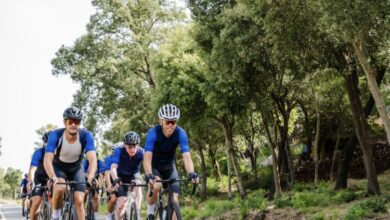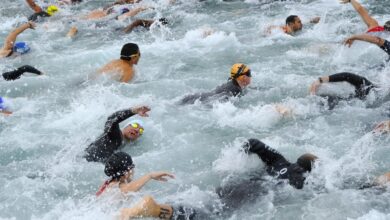Muscle decomposition in endurance sports?
It is very commonufrir discomfort or even chronic injuries during the season because this problem increases as the competitions pass and the training load increases, repeating the decompensating action again and again.
Our collaboratorr Rebook performance This time, he tells us about the most common muscles in which compensation has to be worked to avoid injuries and improve performance
In many cyclical sports, there is a tendency to create muscular decompensation due to a sovereign of the agonist musculature with respect to the antagonist.
Is very habitual suffer discomfort or even chronic injuries during the season because this problem increases as the competitions pass and the training load increases, repeating the decompensating action again and again.
In the case of the swimming crawling style is very well known pain in the back of the shoulder, since the gesture implies a strong action of internal rotation of the shoulder and the great majority to avoid decompensation must work in a constant way the external rotation. The ideal strength ratio should be 2: 1 in internal rotators with respect to external rotators, with a ratio of 3: 1 indicated as potentially dangerous for the rotator cuff.
Fortunately, the work of this muscle group is very simple to perform and just a simple elastic band and a correct execution is enough to gradually correct this decompensation.
In the case of cyclists and runners In the background, something similar happens between quadriceps and femoral. If you belong to this group and suffer discomfort in the anterior area of the knee it is possible that this problem is happening to you.
In this case the quadriceps it is always stronger, but the idea ratio should be 3: 2 and if it is greater than 2: 1 we will probably have problems (study).
But we have an important handicap, to rmake this assessment It does not work with any machine and the ideal would be to do it with isokinetic machines or at least that they have an adequate biomechanics so that the valuation is valid. This is not easy to find.
In addition there is another problem, The quadriceps is very easy to work and almost any leg exercise that you can think of implies that this area does too. But precisely this is what we do not want since our own activity makes us have very strong and worked quadriceps.
What are the best exercises to work the femoral area?
Undoubtedly the best option is a good sitting femoral machine. Even femoral lying down although it can not be as analytical as the previous one if it has an adequate biomechanics will be a good choice.
But when we can not train strength in a gym we can follow a study that offers us the best solution.
In it, a valuation was carried out Electromyography of which of the following exercises without the need for machines offered the greatest activation of the biceps femoris and semitendinosus
Recommendations:
- makes a evaluation of agonists and antagonists at the beginning of the season to avoid injury and perform the strength work suitable from the start, it's worth it and you will save on worries and physiotherapy
- Once you know your weak points, try to perform the most efficient exercises to improve that decompensation and performance
- The best exercises for femoral are the analytical gym machines of this area, but if there is no possibility these are two of the best exercises to be done:
- Sliding leg with towel
- Femoral in TRX
More information about Reebook Performance:
LOCATION AND CONTACT
Reebok Sports Club La Finca
Pº Sports Club, 4
28223 Pozuelo de Alarcón, Madrid
T
There are no previous results.




























